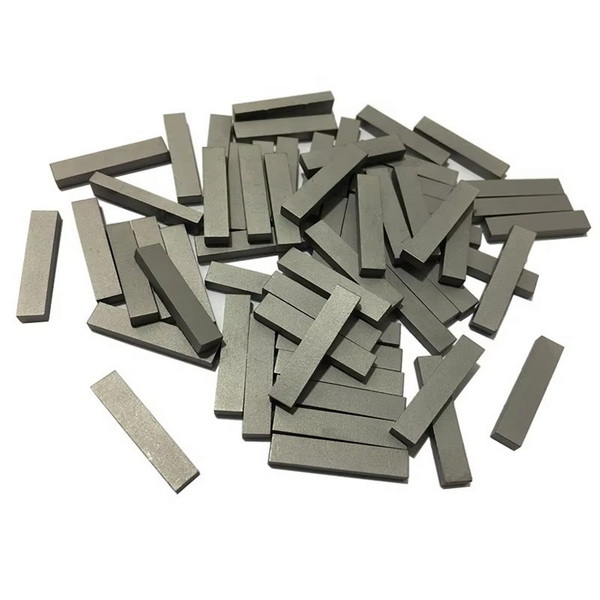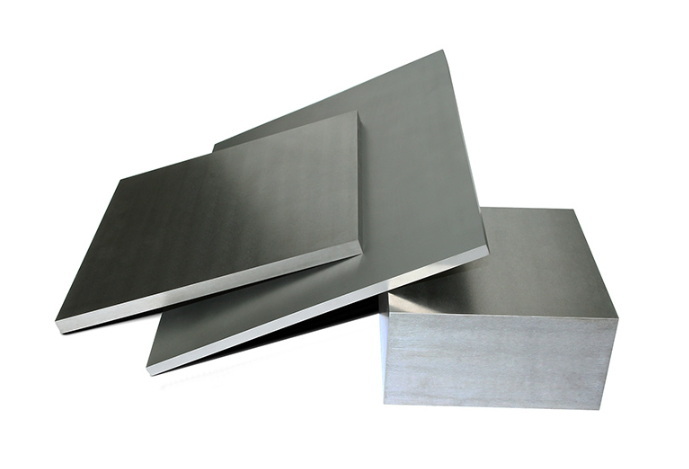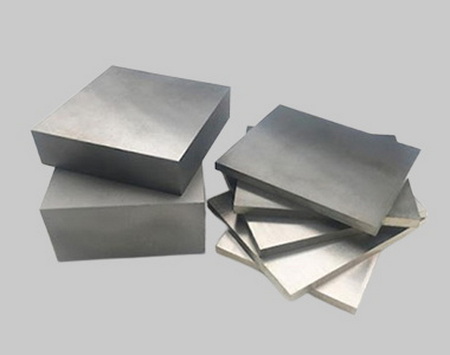Content Menu
● Introduction to Union Carbide
>> Early Innovations
● Product Range
>> Chemicals
>> Plastics
>> Consumer Products
>> Industrial Applications
● Impact and Challenges
>> Bhopal Disaster
>> Economic Challenges
● Acquisition by Dow Chemical
● Expansion and Innovation
● Global Presence
● Environmental Efforts
● Operations in Australia
● Conclusion
● FAQs
>> 1. What was Union Carbide's role in the petrochemical industry?
>> 2. What are some of the key plastics produced by Union Carbide?
>> 3. What was the impact of the Bhopal disaster on Union Carbide?
>> 4. What consumer products did Union Carbide divest?
>> 5. Who acquired Union Carbide in 2001?
● Citations:
Union Carbide Corporation, a multinational American chemical company, has a rich history dating back to its incorporation in 1917 as Union Carbide & Carbon Corporation. Over the years, the company has been involved in the production of a wide range of chemicals and plastics, serving various industries such as paints, coatings, packaging, automotive, textiles, and more. This article will delve into the diverse products made by Union Carbide, highlighting its contributions to the petrochemical industry and its impact on global markets.

Introduction to Union Carbide
Union Carbide was founded through the merger of several companies, including the National Carbon Company. Initially, it focused on carbon products, such as carbons for electric arc street lights and calcium carbide for making acetylene for carriage lamps. However, it soon expanded into new areas like gases and metal alloys, leveraging its ability to scale laboratory operations to full-scale production. This skill proved invaluable during World War II, particularly in the manufacture of butadiene and polyethylene used in synthetic rubber and high-frequency cable insulation, respectively[1][3].
Early Innovations
One of Union Carbide's early innovations was the development of an economical method to produce ethylene from natural gas liquids like ethane and propane. This breakthrough marked the beginning of the modern petrochemical industry. Additionally, the company acquired Leo Baekeland's Bakelite Corporation in 1939, expanding its portfolio to include phenolic plastics[3]. These early innovations set the stage for Union Carbide's future growth and diversification.
Product Range
Union Carbide's product range is diverse and extensive, catering to various sectors:
Chemicals
- Ethylene and Polyethylene: These are foundational products in the petrochemical industry. Polyethylene is used in packaging, pipes, and other consumer goods. Ethylene is a critical building block for many other chemicals and plastics.
- Butadiene: Used in the production of synthetic rubber, which is essential for tires and other rubber products. Butadiene is also a key component in the manufacture of ABS plastics.
- Methyl Isocyanate (MIC): Although infamous due to the Bhopal disaster, MIC is a key intermediate in the production of pesticides like Sevin and Temik.
- Sevin and Temik Insecticides: These were consumer products used in agriculture to control pests. They were widely used in the United States and other countries for crop protection.
Plastics
- Phenolics (Bakelite): Acquired through the purchase of Bakelite Corporation, these plastics are used in electrical components and other applications. Phenolic resins are known for their heat resistance and electrical insulation properties.
- Epoxy Resins: Known for their strength and resistance, epoxy resins are used in construction, automotive, and electronics. They are often used as adhesives or coatings.
- Polystyrene: Commonly used in packaging materials and disposable cutlery. Polystyrene is also used in foam insulation and other building materials.
- Vinyls (PVC): Used in pipes, vinyl records, and other consumer products. PVC is versatile and can be formulated to meet a wide range of applications.
- Polyester and Epoxide Resins: These engineering plastics are used in various industrial applications, including textiles and composite materials.
Consumer Products
- Eveready Batteries: Although divested, these batteries were once a significant consumer product line for Union Carbide. Eveready was a well-known brand for household batteries.
- Glad Bags and Wraps: Another consumer product line that was eventually divested. Glad products were popular for kitchen use.
- Prestone Antifreeze: Used in automotive applications to prevent engine freezing. Prestone remains a recognized brand in the automotive sector.
Industrial Applications
- Paints and Coatings: Chemicals produced by Union Carbide are used in the formulation of paints and coatings. These chemicals enhance durability and performance.
- Packaging: Plastics like polyethylene and polystyrene are crucial in packaging materials. They provide protection and convenience for consumer goods.
- Automotive: Plastics and chemicals are used in vehicle components and manufacturing processes. They contribute to lighter, more efficient vehicles.
- Textiles: Some chemicals are used in textile manufacturing processes, improving fabric properties such as strength and water resistance.

Impact and Challenges
Bhopal Disaster
One of the most significant challenges faced by Union Carbide was the Bhopal disaster in 1984. The leak of methyl isocyanate from its plant in Bhopal, India, resulted in thousands of deaths and injuries, leading to a major settlement and increased scrutiny over safety practices in chemical plants worldwide[3]. This event had a profound impact on Union Carbide's operations and reputation, prompting significant changes in safety protocols across the industry.
Recent developments have highlighted Union Carbide's role in designing and building the Bhopal plant, with new evidence showing its direct involvement in the plant's design and waste management systems. Despite these challenges, Union Carbide, now a subsidiary of Dow Chemical, continues to face legal and environmental issues related to the Bhopal site. Efforts to clean up the site have been ongoing, with recent progress in removing toxic waste from the area.
Economic Challenges
The company faced economic challenges due to increased competition and fluctuating chemical prices. This led to divestitures of several consumer product lines and a strategic focus on core chemical and polymer production. By concentrating on its core strengths, Union Carbide aimed to maintain profitability in a competitive market.
Acquisition by Dow Chemical
In 2001, Union Carbide was acquired by Dow Chemical Company, becoming a wholly owned subsidiary. This acquisition further consolidated Union Carbide's position in the petrochemical industry, allowing it to leverage Dow's global resources and expertise[3]. The merger enabled both companies to combine their strengths, enhancing their competitive edge in the market. Union Carbide's cost-effective production capabilities and Dow's extensive market reach created a powerful synergy, positioning them as major players in the polymer industry.
Expansion and Innovation
Under Dow's ownership, Union Carbide continued to innovate and expand its product lines. The company invested in research and development, focusing on sustainable technologies and products that could meet emerging market demands. This included developing more environmentally friendly packaging solutions and advanced materials for the automotive sector. Dow's commitment to sustainability has also led to significant investments in recycling technologies, aiming to reduce waste and increase the use of circular materials.
Global Presence
Union Carbide's products are used globally, contributing to various industries in different regions. Its chemicals and plastics are integral to manufacturing processes in Asia, Europe, and the Americas. The company's global reach has allowed it to adapt to regional market needs, providing tailored solutions for diverse customer bases.
Environmental Efforts
In recent years, there has been a significant push towards environmental sustainability. Dow, as the parent company, has been working on initiatives to reduce waste and increase recycling. For instance, Dow has been involved in projects to mechanically recycle plastic waste, aiming to process substantial amounts of post-consumer materials by 2025. These efforts reflect a broader industry shift towards more sustainable practices, aligning with global environmental goals.
Operations in Australia
Union Carbide's operations in Australia commenced in 1957, when it purchased the plant of the Australian-owned company Timbrol Ltd. The Timbrol factory was located on the shore of Homebush Bay in the Sydney suburb of Rhodes. Union Carbide continued the production of herbicides like 2,4-D and 2,4,5-T until 1976 and chlorobenzene/chlorophenol/DDT until 1983. The company also commenced the production of bisphenol A in 1960 and phenol formaldehyde resins in 1964[3].
Union Carbide ceased operations in Australia in 1985. In 1987, the New South Wales Pollution Control Commission ordered Union Carbide to remediate the site. This work, which cost Union Carbide $30 million, was conducted between 1988 and 1993. The remediation involved excavation and encapsulation of contaminated soil.
In 2004, the New South Wales Minister for Planning granted consent for additional remediation of the former Union Carbide site to proceed, including parts of Homebush Bay. Approximately 900,000 tons of soil were excavated from the site, 190,000 tons of soil from the adjacent Allied Feeds site, and approximately 50,000 tons of sediment from the bay. Remediation of the Allied Feeds Site was completed in August 2009, Homebush Bay sediments in August 2010, and the Union Carbide site in March 2011. The cost of the remediation work was $35 million for the Allied Feeds site and $100 million for Union Carbide site and Homebush Bay sediments.
Conclusion
Union Carbide Corporation has played a pivotal role in the development of the petrochemical industry, contributing significantly to the production of essential chemicals and plastics. Despite facing challenges such as the Bhopal disaster, the company remains a key player in the sector under the ownership of Dow Chemical. Its legacy continues to influence various industries, from automotive to textiles.

FAQs
1. What was Union Carbide's role in the petrochemical industry?
Union Carbide was instrumental in developing an economical method to produce ethylene from natural gas liquids, marking the beginning of the modern petrochemical industry. It also produced a wide range of chemicals and plastics used in various sectors.
2. What are some of the key plastics produced by Union Carbide?
Key plastics include phenolics (Bakelite), epoxy, polystyrene, vinyls (PVC), and polyethylene.
3. What was the impact of the Bhopal disaster on Union Carbide?
The Bhopal disaster led to significant legal and financial liabilities for Union Carbide, resulting in a major settlement and increased global scrutiny over chemical plant safety. It also led to the sale of many of its businesses to meet these liabilities.
4. What consumer products did Union Carbide divest?
Union Carbide divested consumer product lines such as Eveready batteries, Glad bags and wraps, and Prestone antifreeze.
5. Who acquired Union Carbide in 2001?
Union Carbide was acquired by Dow Chemical Company in 2001, becoming a wholly owned subsidiary.
Citations:
[1] https://en.wikipedia.org/wiki/Union_Carbide
[2] https://www.wvencyclopedia.org/entries/787
[3] https://www.istockphoto.com/photos/carbide
[4] https://plastiquarian.com/?page_id=14284
[5] https://www.feg.com.tw/en/news/news_detail.aspx?id=419
[6] https://www.unioncarbide.com/history.html
[7] https://digital.library.mcgill.ca/images/hrcorpreports/pdfs/6/632842.pdf
[8] https://www.shutterstock.com/search/union-carbide-building
[9] https://digital.lib.ecu.edu/7216
[10] https://digital.lib.ecu.edu/6091
[11] https://www.bmartin.cc/pubs/06globalsociety/Chronology.pdf
[12] https://www.carbidecamps.net/UCC%20Articles/HistoryOfUCC/CH1%5B1of2%5Docr.pdf
[13] https://www.y12.doe.gov/sites/default/files/assets/document/2012-12-28.pdf
[14] https://www.amnesty.org/en/wp-content/uploads/2021/08/asa200052005en.pdf
[15] https://www.bhopal.com/ucc-tragedy-response-efforts.html
[16] https://www.vedantu.com/question-answer/which-of-the-following-was-the-costcutting-means-class-10-social-science-cbse-5ff6137e76427a66a4594094
[17] https://www.bhopal.com/document/browning.pdf
[18] https://www.bellucklaw.com/new-york-asbestos-companies/union-carbide/
[19] https://www.unioncarbide.com/products.html
[20] https://www.si.edu/object/SILNMAHTL_25564
[21] https://www.mesothelioma.com/asbestos-exposure/companies/union-carbide/
[22] https://www.chemeurope.com/en/encyclopedia/Union_Carbide.html
[23] https://www.epa.gov/hwcorrectiveactioncleanups/documents-reports-and-photographs-union-carbide-corporation-institute
[24] https://www.theatlantic.com/photo/2014/12/bhopal-the-worlds-worst-industrial-disaster-30-years-later/100864/
[25] https://www.bbc.com/news/articles/cp35vlg3zvxo
[26] https://www.shutterstock.com/search/union-carbide
[27] https://en.wikipedia.org/wiki/Union_Carbide_India_Limited
[28] https://www.encyclopedia.com/social-sciences-and-law/economics-business-and-labor/businesses-and-occupations/union-carbide-corp
[29] https://www.bhopal.com/uc-india-limited-history.html
[30] https://www.funtrivia.com/trivia-quiz/History/The-Bhopal--Tragedy-192617.html
[31] https://www.vedantu.com/question-answer/union-carbide-india-limited-ucil-is-a-company-class-10-social-science-cbse-6005102be7ed25330db666e6
[32] https://www.chandlermcnulty.com/union-carbide-corporation-a-legacy-of-mesothelioma-and-asbestos/
















